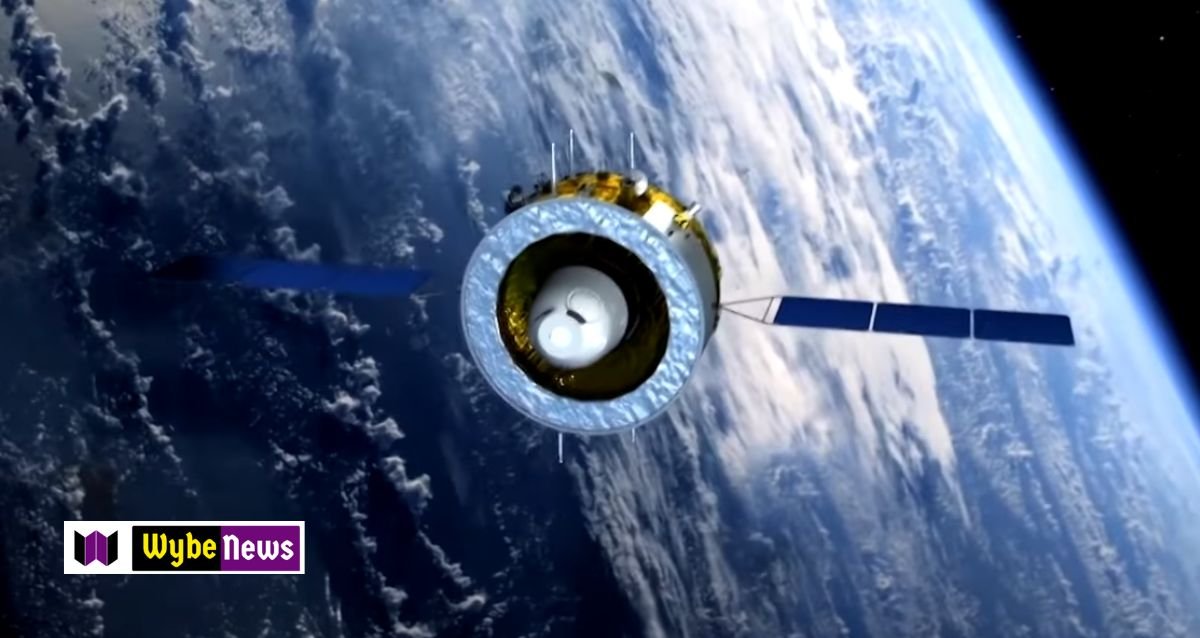China’s Lunar Probe Returns with Historic Samples from Moon’s Far Side

The Chang’e-6 mission represents a groundbreaking achievement in lunar exploration, marking a significant milestone with the collection of the first-ever samples from the moon’s far side. Launched in early May from the Wenchang Space Launch Center, this ambitious mission underscores China’s burgeoning capabilities in space exploration. The spacecraft successfully landed on a crater near the moon’s south pole, a region characterized by its challenging and rugged terrain.
The complexities associated with the far side of the moon posed significant challenges for the Chang’e-6 mission. Unlike the near side, which is always visible from Earth, the far side remains hidden, making communication and navigation more arduous. However, leveraging advanced technology and meticulous planning, the mission was able to overcome these obstacles. The spacecraft’s precise landing on the targeted crater near the moon’s south pole was a testament to the mission’s sophisticated engineering and strategic execution.
Spanning a duration of 53 days, the Chang’e-6 mission involved intricate operations from the initial launch to the collection of lunar samples and the safe return to Earth. The mission’s success was not only a demonstration of technical prowess but also a significant contribution to scientific research. The samples retrieved from the moon’s far side are expected to provide valuable insights into the lunar surface’s composition and the moon’s geological history, offering a wealth of information to the global scientific community.
The Chang’e-6 mission culminated with the spacecraft’s return to Inner Mongolia, where the retrieved samples were safely secured. This historic accomplishment underscores the growing prominence of China in the realm of space exploration, paving the way for future missions and collaborative efforts in understanding the lunar environment and beyond.
Scientific Significance of the Far Side Samples
The samples collected from the moon’s far side by China’s lunar probe represent a monumental step in lunar exploration, offering profound scientific significance. These samples could potentially provide unprecedented insights into planetary formation and the moon’s geological history. Unlike the near side, which has been extensively studied and sampled, the far side of the moon remains relatively unexplored, thereby holding the promise of new discoveries.
One of the primary scientific objectives is to understand the differences between the moon’s near and far sides. According to Catherine Heymans, the Astronomer Royal for Scotland, these samples might test existing theories about the moon’s formation, particularly the Giant Impact Hypothesis. This hypothesis suggests that the moon formed from the debris resulting from a collision between Earth and a Mars-sized body. By analyzing the composition of the far side samples, scientists can validate or challenge this theory, deepening our understanding of lunar and planetary genesis.
Moreover, the geological history encoded within these samples is of immense importance. The far side of the moon features more craters and older terrain compared to the near side, which has been resurfaced by volcanic activity. By examining the mineral content and isotopic composition of these samples, researchers can gain insights into the chronological sequence of lunar events, helping to construct a more comprehensive timeline of the moon’s geological evolution.
Another exciting aspect is the potential discovery of traces of ice within these samples. If ice is present, it could have crucial implications for future lunar missions. Water ice can be a valuable resource, not only for sustaining human presence on the moon but also for producing fuel for spacecraft. This would significantly enhance the feasibility of long-term lunar exploration and even support missions to Mars and beyond.
In essence, the samples from the moon’s far side are a treasure trove of scientific information. They hold the key to unlocking mysteries about the moon’s formation, geological history, and potential for supporting future missions, making this a landmark achievement in space exploration.
China’s Growing Ambitions in Space Exploration
Over the past decade, China has significantly amplified its efforts and investments in space exploration, positioning itself as a formidable player in the global space arena. The nation’s space program has seen a series of impressive milestones, underscoring its growing ambitions and technological prowess. Notably, China has made history by becoming the only country to have successfully landed on the far side of the moon twice, a feat that highlights its advanced capabilities in space exploration.
One of the most significant achievements in recent times has been the Chang’e-6 mission. Lauded by President Xi Jinping, the mission not only demonstrates China’s technological advancements but also serves as a testament to the nation’s commitment to exploring the far reaches of space. President Xi has been a vocal advocate of the space program, commending the team behind the Chang’e-6 mission and articulating a clear vision for China’s future endeavors in space exploration. His support underscores the strategic importance that the Chinese government places on its space program, viewing it as a critical component of national pride and technological advancement.
Looking ahead, China has set ambitious goals for its space program. By 2030, the nation aims to send a crewed mission to the moon, marking a significant milestone in human space exploration. This mission is part of a broader vision that includes the establishment of a lunar base, which would serve as a platform for further scientific research and potential future deep space missions. These plans reflect China’s long-term commitment to becoming a leading force in space exploration, with aspirations that extend beyond the moon to Mars and beyond.
China’s growing ambitions in space exploration are driven by a combination of technological innovation, strategic vision, and national pride. As the country continues to achieve new milestones and expand its capabilities, it is poised to play an increasingly prominent role in the future of space exploration.
Global Implications and the New Space Race
China’s successful lunar mission, particularly the Chang’e-6 probe, marks a significant milestone in space exploration. This achievement not only underscores China’s growing capabilities but also has broader implications for the global landscape of space exploration. As the United States prepares to return astronauts to the moon with the Artemis 3 mission by 2026, the stage is set for a renewed space race, reminiscent of the Cold War era.
The competition to control lunar resources is intensifying. The moon’s far side, where China’s probe landed, is believed to be rich in minerals and other valuable resources. This has spurred interest from multiple nations, each aiming to secure a strategic foothold. China’s lunar achievements signal its ambition to be a dominant player in space, challenging the United States’ long-standing leadership. The Artemis program, with its goal of establishing a sustainable human presence on the moon, is a direct response to this challenge.
Geopolitically, the implications are profound. Control of lunar resources could translate into significant economic and strategic advantages. Nations that lead in space exploration are likely to set the rules for future space activities, including the exploitation of extraterrestrial resources. This emerging space race is not just about scientific discovery but also about national security and technological supremacy.
The role of state media in promoting national pride through the Chang’e-6 mission cannot be overstated. Chinese state media has extensively covered the mission, framing it as a testament to the nation’s scientific and technological prowess. This narrative not only bolsters national pride but also serves to legitimize the government’s investments in space exploration. By highlighting these achievements, state media aims to inspire a sense of unity and purpose among the Chinese populace.
In conclusion, China’s lunar achievements have far-reaching implications, heralding a new era of competition and cooperation in space. As nations vie for control of lunar resources, the geopolitical landscape is set to evolve, making space exploration a critical arena for demonstrating national power and influence.






